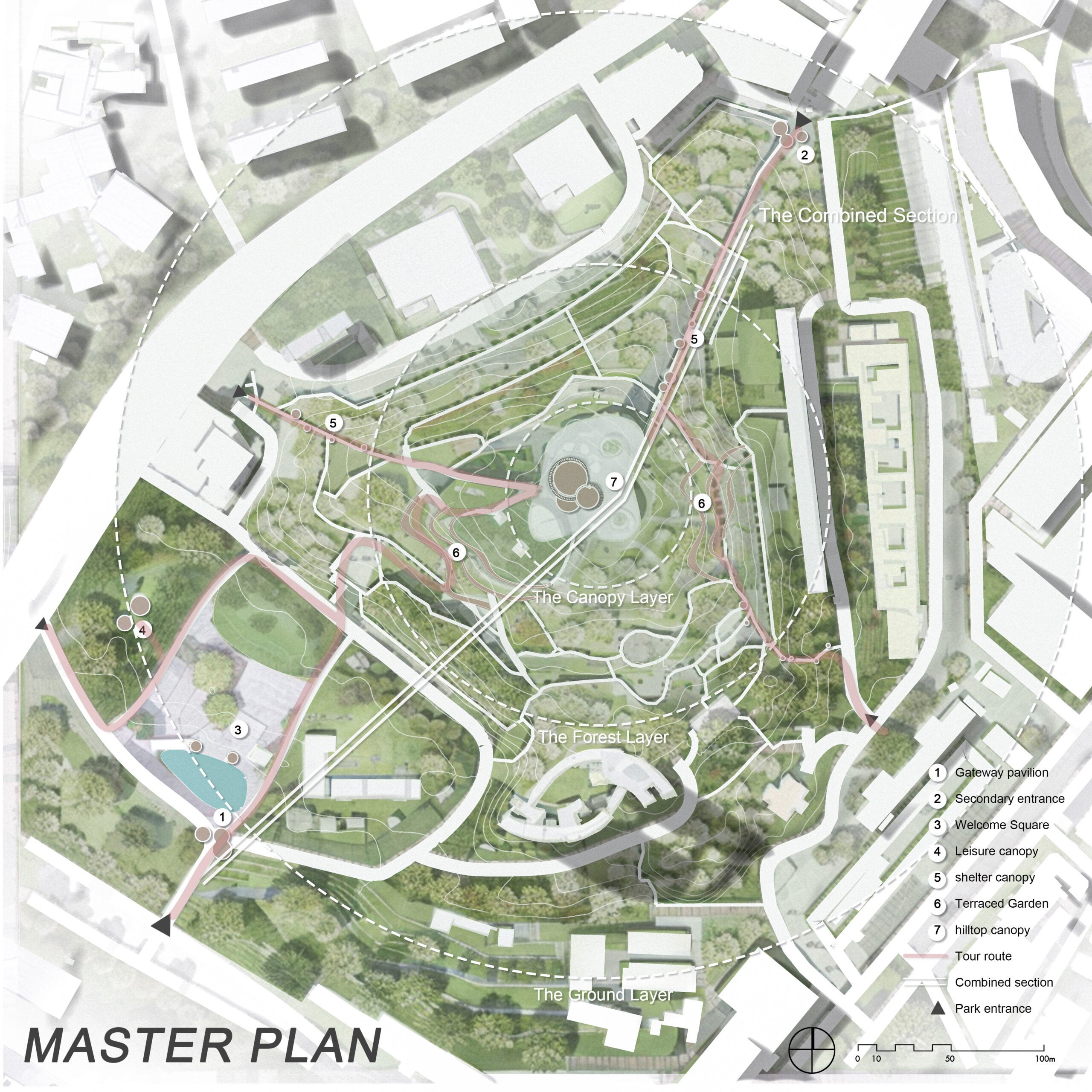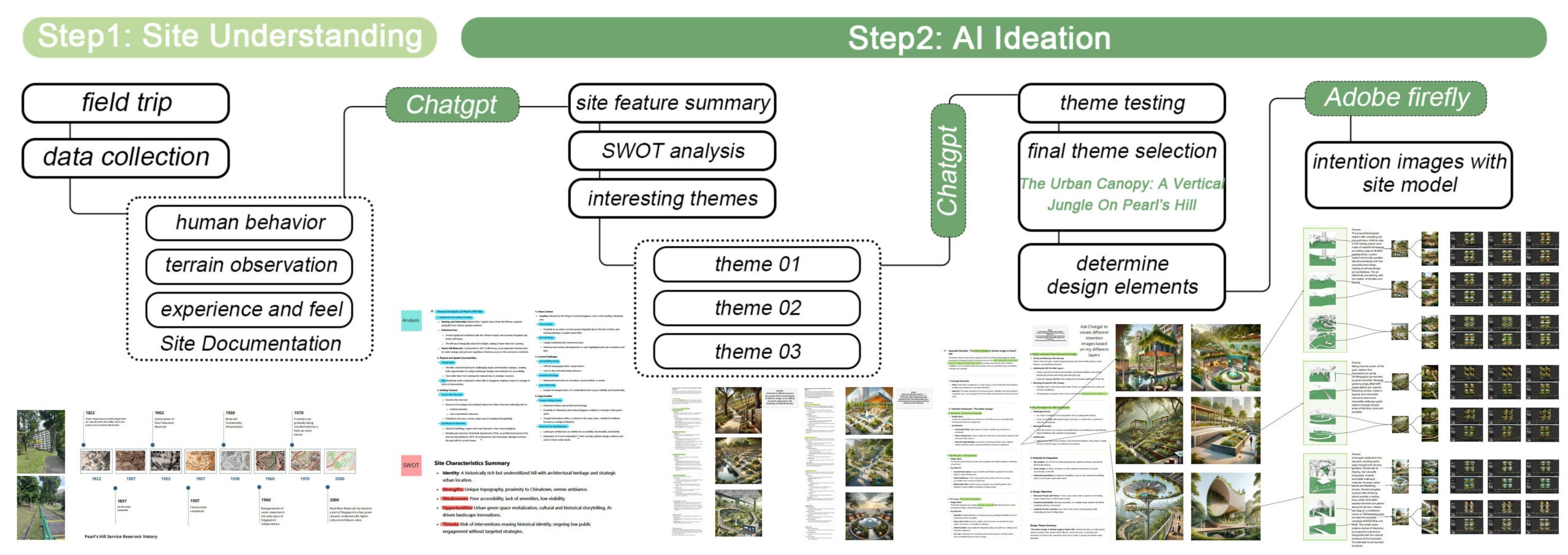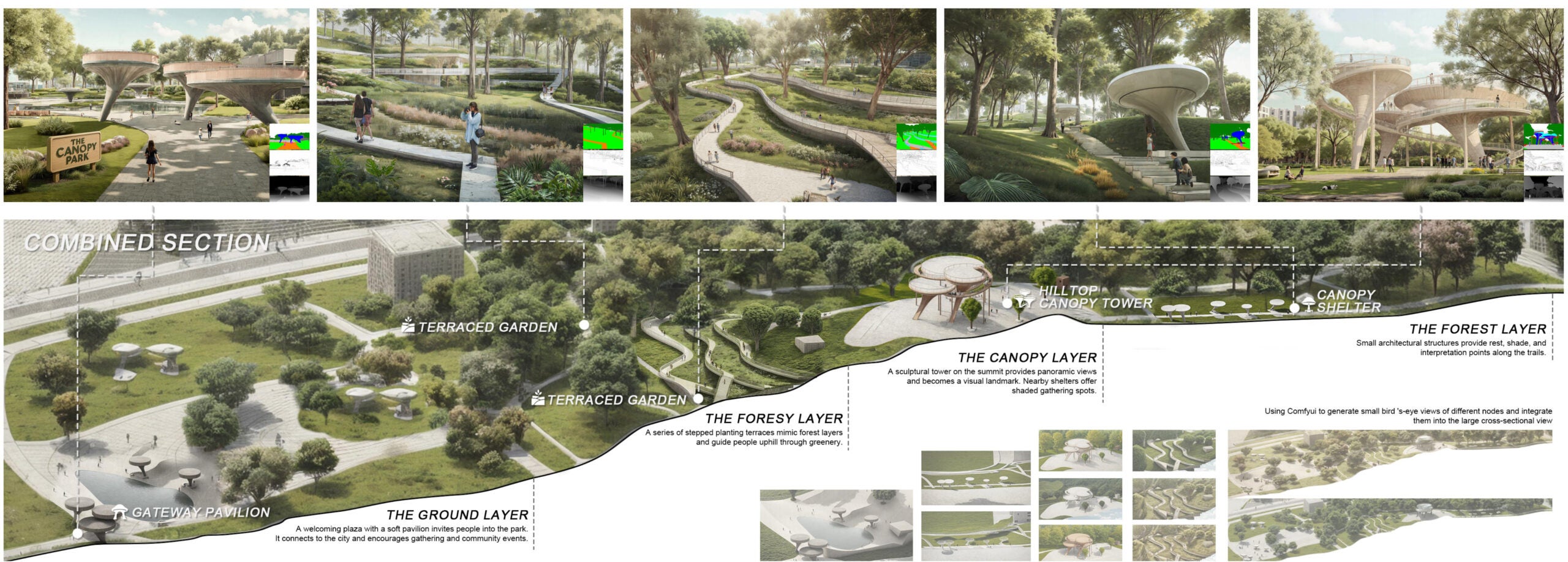The Urban Canopy: A Vertical Jungle On Pearl’s Hill
PROGRAMME
Master of Landscape Architecture
STUDENT
Wen Guangyuan
YEAR
1
ADVISOR/TUTOR
Lin Shengwei Ervine

The Urban Canopy: A Vertical Jungle on Pearl’s Hill reimagines a historically yet underutilized hillside park in central Singapore. The design envisions a continuous spatial journey across three layers—the Ground, the Forest Floor, and the Canopy—where the organic language of the canopy structure weaves through the entire site. The Ground Layer provides an open plaza for community gathering and events; the Forest Layer offers terraced gardens and shaded pathways, celebrating biodiversity and promoting a slower, reflective journey uphill; the Canopy Layer culminates with a sculptural installation, allowing visitors to reach the summit and experience expansive city views. The project focuses on creating a fluid experience of gathering, exploration, and elevation, emphasizing movement through shifting landscapes and sculptural interventions. The canopy-inspired forms anchor the site’s identity, offering visual continuity and moments of pause, while respecting the site’s topography and scale.
This project also serves as an exploration of AI-assisted workflows in landscape architecture, integrating tools such as ChatGPT, ComfyUI, Adobe Firefly, Photoshop, Rhino, Grasshopper and Tripo3d. AI was involved across every stage—analyzing site conditions, proposing multiple design narratives, refining conceptual ideas, and producing visual outputs. Through iterative human-machine collaboration, the project demonstrates how AI can augment creative processes, enhance visualization accuracy, and unlock unexpected design possibilities. Rather than replacing human intuition, AI acted as an active partner in expanding the imagination and bridging technical and narrative development.


The master plan illustrates the spatial layering of the Ground, Forest Floor, and Canopy levels, emphasizing fluid circulation, gathering spaces, and scenic experiences throughout the park.
